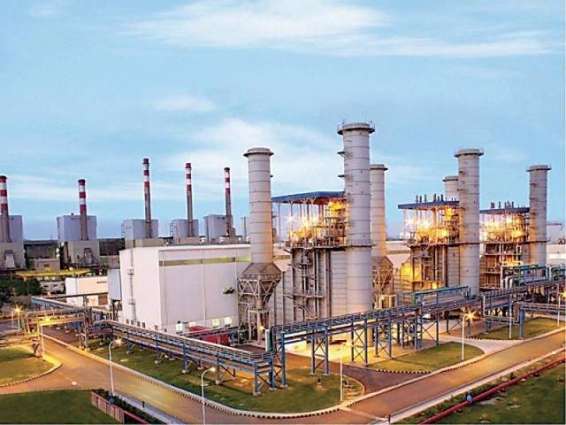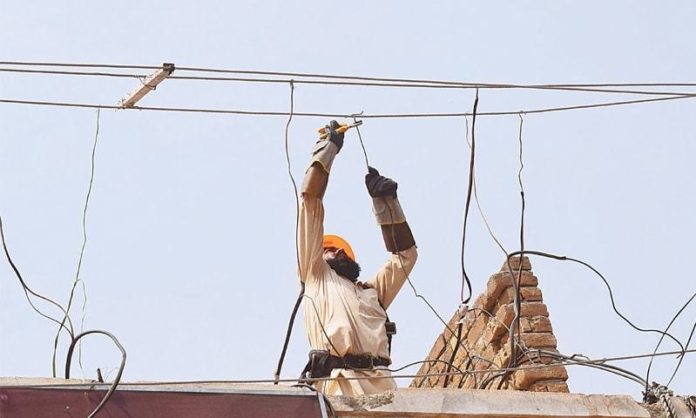Dear Readers,
Poor governance, incompetence, lack of transparency, distribution and transmission losses (euphemism for theft), have contributed to the energy crisis in Pakistan. While Pakistan’s economic activity has been affected it has also caused considerable public unrest as prolonged load-shedding of electricity (and gas) have become the norm. Pakistan’s problems have com pounded because of over reliance on thermal power plants using mainly furnace oil. Pakistan’s failure to complete a hydroelectric project in recent decades has added to the problem, the last mega dam, Tarbela, was built in the mid-seventies, since then no other dam has been constructed. Load shedding, power theft, line losses, etc. have added to the crisis and consumers’ woes. Pakistan should have constructed at least one mega sized hydroelectricity power plant per decode for producing low cost power and water but successive govts failed to do this. Karachi being the largest city and the hub of commerce and industry has been affected particularly severely. The govt is very quick to shift all blame for Karachi’s energy problems onto K-Electric which has become a convenient target. Karachi’s energy crisis does not stem only from its electricity provider but the causes trickle down from all facets of the govt to those, both rich and poor who indulge in electricity theft. The deep-rooted structural issues, exacerbated by political interference and systemic graft also lie at the heart of the power crisis. In the last five years or so, Do Pakistan has taken a hit of Rs.145 billion per annum from system losses in the grid due to inefficient Transmission and distribution. For the benefit of readers I am reproducing my article titled “INVESTMENT IN JEOPARD”.
Incorporated in 1913, KE is Pakistan’s only vertically integrated power utility with the license to provide electricity in Karachi, Pakistan’s commercial hub and largest city. The network spans 6500 sq. km. serving a 2.5m strong customer base in a city of 20 million people, 10% of Pakistan’s total population. Privatized in 2005, it was first acquired by KES Power, in 2009 Abraaj acquired a controlling stake in KES Power from Al Jomaih and NIG, currently the 66.4% shareholder of KE. My company’s services were hired by KESC on privatization. Lt Gen (Retd) Mohammad Amjad the Chief Executive required us to target those robbing KESC blind, both inside and from outside, e.g. those stealing electricity, etc. When Arif Naqvi, Founder and CEO of Abraaj, asked for my advice about investing in KESC, I told him “KESC can be turned around and you can make it the asset it was meant to be”.
Rebranding signified a break from the past as an inefficient public sector company. Reflecting on the situation in 2008 Arif Naqvi stated: “Almost nothing about the company worked. You could not have designed a more troubled company if you had set your mind to it. We were the only people willing to look at the company.” Abraaj led a KE-turnaround by focusing on three core aspects (1) improving generation efficiency (2) reducing Transmission and Distribution (T & D) losses and (3) Compared to a negative EBITDA of US $87m at the time of acquisition, EBITDA improving to USD 339m in FY 2015. Revenues jumped from $1,084m Revenue to $1,778m; growth in EBITDA from $87m to $372; customers grew from 2.0m in 2009 to 2.5m today, grid stations increased from 52-64, and decrease in T&D losses from 35.9% to 23.3%.
A cash loss of approx USD 15 million per month caused shortages in purchasing sufficient furnace oil, consequently a reduction in overall electricity output. CAPEX requirement of old and dilapidated plants poor system reliability and de-rated capacity of 400MW was USD 1- billion. An adverse fuel mix, expensive furnace oil versus cheaper gas; high transmission and distribution [T&D] energy losses of nearly 40% and with an unreliable network with inadequate and unreactive maintenance, complicated to lack of any accountability about the glaring leadership failure. Over-staffing was taking place, with excessive non-core workers, a demoralized workforce, misaligned management objectives and a politically motivated Labour Union all hindering effectively manage over 17,500 employees. Red-tape led to inefficient operations. Severe reputational damage, extremely negative public image and loss of confidence among consumers was aggravated. Law & order problems and no-go areas within the city hampered recovery efforts in 11 difficult areas, the combined distribution loss was close to 44%.
A particular individual whom I had helped get a senior KESC job tried to prove himself “more loyal than the king”. Not wanting this loathsome person’s perfidy to affect my relationship with Arif Naqvi, I terminated our relationship with KESC in 2011. Nevertheless one continues to admire Arif as not only one of Pakistan’s” outstanding entrepreneurs but someone who selflessly promotes Pakistan, constantly. The KE turnaround is symbolized by an effective management team headed by dynamic but self-effacing Tayyab Tareen.

Strategic initiatives taken by new KE management included enhancing fleet efficiency, reducing T&D losses and improving operational processes to unlock value. Introduction of modern and more efficient plants achieved generation efficiency through investment of over USD 850m since 2009, increasing generation by more than 1037 MWs through completion of four major projects. (1) 247 MW CCPP Korangi (2) 180 MW GEJB Korangi and SITE (3) 50 MW BQPS-1 rehabilitation and (4) 560 MW BQPS-2. Transmission network reliability and distribution platform were improved. Reducing operational losses was done by reductions in actual O&M costs incurred, optimized sales mix, implementation of new and re-engineered processes [billing, CRM, energy measurement, customer feedback, etc.] Workforce effectiveness was enhanced through resource optimization and introduction of performance focused culture. 3500 non-management were promoted to management level followed by regularization of 5700 contractual staff. Voluntary separation scheme cost the company Pak Rs.6 billion for 4459 non-core staff. 1372 employees were dismissed/ terminated across all cadres due to corruption, theft and misconduct. Excess overtime payments were halted. Successful outsourcing of non-core positions was effected despite the resistance and violence faced.
On October 28, 2016 Abraaj-controlled KES Power (“KESP”), entered into a definitive agreement to divest its 66.4% shareholding in K-Electric to Shanghai Electric Power Company Limited (“SEP”) for US$ 1.77bn. Thereafter NEPRA issued a base tariff of Rs.12.07 per kilowatt-hour (kwh) against the KE request of Rs.16.23 against the existing tariff of Rs.15.57, a decrease of Rs.3.50 per kwh instead of the requested increase of 0.66 per kwh. Reducing by Rs.3.5 per kWh for KE by NEPRA will not benefit the end consumers but the approximately 25% reduction will severely impact K-Electric’s revenues, a profitable company will become to a loss making entity overnight. Much needed investment in KE infrastructure cannot be done because it is detrimental to the end consumers, neither the consumers nor K-Electric is satisfied with this tariff. The new tariff is based on assumptions that are unrealistic and not based on ground realities 100% recovery is not possible in any emerging market. This controversy has far reaching implications for future investment in Pakistan. An economically lucrative entity has made KE unattractive to the potential investor.
The DISCOs continue operating because of operational subsidies from the government, can the KE being a private entity? With such significant cost not accounted for KE will likely revert to its pre-privatization days with significant losses and not raise the financing required for execution of its investment plan of over USD 4 billion. All the good work done may well go down the drain; the consumers being the ultimate sufferers.
Wang Yudan, Chairman of Shanghai Electric Power Co., commented that “SEP appreciates what Abraaj has achieved at K-Electric over the past seven years and recognizes the performance and capability of K-Electric’s management team”. Committed to achieving KE’s next phase of operational and financial excellence to benefit Karachi and KE’s consumers, the injecting of US$ 9 billion planned by SEP will be the single largest investment in Pakistan ever. Due to NEPRA’s stupid (and what seems to be prima-facie personally motivated) decision, this single largest investment ever in Pakistan is likely to walk away. A lot of people claim that for them Pakistan comes “first”, how many times have we seen that this is just rhetoric, that their greed and/or prejudice comes first at the cost of Pakistan?
“The opinions/views expressed in Defence Journal are entirely those of the writers and cannot be construed to reflect the official views of Defence Journal”.




